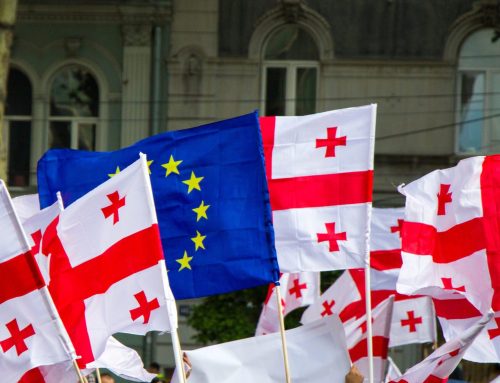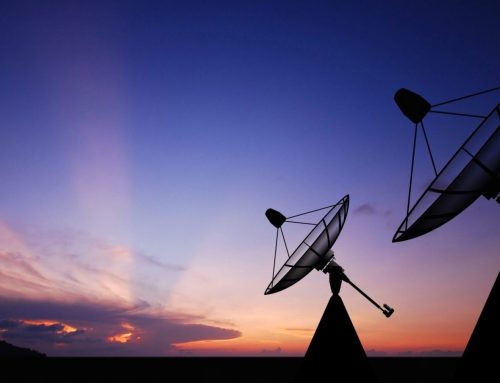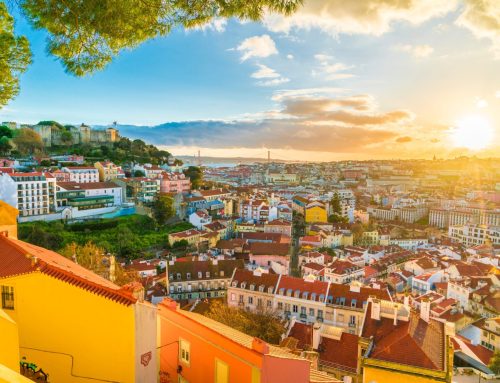Russia
Monitored Russian accounts sent 16,344 tweets, generating 178,980 retweets and 532,493 likes.
Kremlin-linked accounts last week focused on US House Speaker Nancy Pelosi’s visit to Taiwan, calling the trip a provocation, amplifying China’s threats, and stressing Moscow’s solidarity with Beijing. “Pelosi” was the most frequently used key phrase by Russian state media and diplomats on Twitter. Taiwan was the second most mentioned country by monitored Russian accounts during the 48 hours after Pelosi touched down in Taipei. Ukraine was knocked all the way down to fifth during that timeframe. Russian propagandists argued that Pelosi’s visit was a “clear provocation,” the “most reckless diplomatic move by the US so far this year,” and a trial balloon ”in the politics of war.” One RT op-ed asked if the visit would spark a war, while another said the United States proved that China’s diplomacy had failed, leaving Beijing with only “a military response.” State media also echoed China’s claims that the United State was the “main destroyer of peace” and “must pay a price” for Pelosi’s visit. They showcased China’s military firing missiles, moving equipment and personnel, and sending fighter jets over the Taiwan Strait. RT posted a graphic showing China’s military superiority over Taiwan. Multiple accounts compared the United States’ role in Taiwan to its role in Ukraine. Others attacked Pelosi specifically. Renegade Inc. retweeted a post that said, “The US military was just used to help a dementia patient try to start WW3.” Life brought in a “trauma doctor” to explain why Pelosi “walks like a duck.” Kremlin-backed accounts called the House speaker a corrupt war monger who’s unliked by her constituents. Diplomatic accounts, meanwhile, highlighted the strong partnership between Russia and China, with a dozen diplomats tweeting #WeStandWithChina.
Meanwhile, Moscow-backed accounts pushed new claims about the threat of a nuclear disaster in Ukraine, illegal Ukrainian mines, and US bioweapons. After a series of blasts hit the Russian-occupied Zaporizhzhia nuclear plant in southeastern Ukraine, Russian officials accused Kyiv of “nuclear terrorism” and warned of a Chernobyl-style nuclear fallout. Diplomats said that Russia was seeking to “cooperate closely and constructively” with the International Atomic Energy Agency to resolve the situation but was enduring “unstoppable sabotage” from Ukrainian forces. Kremlin-affiliated accounts also argued that Ukraine was using “butterfly” mines in violation of international commitments. Finally, the Russian Ministry of Defense said that it had uncovered new data on US bioweapons in Ukraine, including evidence suggesting the US government was responsible for the coronavirus pandemic and proof that the United States used bioweapons to assassinate the former Venezuelan leader Hugo Chavez. In the same update, Russian officials said Ukrainian soldiers were addicted to narcotics, which, they said, “explains the extreme cruelty towards civilians displayed by some Ukrainian servicemen.”
Russian propagandists also capitalized on Western commentary that aligned with their messaging around Ukraine. Diplomats and state media posted 100 tweets that drew attention to an Amnesty International report that claimed that the Ukrainian military had endangered civilians. Multiple accounts circulated tweets about a CBS documentary that said only 30 percent of the weapons sent to Ukraine reached the frontlines. One diplomat retweeted a post that pointed to the CBS documentary as proof that the US was on the verge of “cutting Zelensky and Ukraine loose” within the month. CBS has since said the figures it cited were inaccurate. Others pointed to comments by US lawmakers, including Sen. Lindsey Graham’s (R-SC) statement that US weapons will allow Ukraine to “fight to the last Ukrainian,” which is a common line in Russian propaganda meant to show Western aid as something that will lead to more killing but not a Ukrainian victory.
Moscow-affiliated accounts also weighed in on fighting over the weekend between Israel and the Islamic Jihad militant group in Gaza that left dozens of Palestinians dead. State media showcased Israel bombs killing women and children after landing in city centers and refugee camps. Several journalists affiliated with Kremlin-funded outlets criticized US support for Israel and asked if any Western politicians had called to arm Palestinians in the way that they’ve armed Ukrainians. Russian diplomatic accounts called for a ceasefire, which was eventually brokered, and expressed concern for the “deplorable humanitarian situation in Gaza.”
Kremlin-directed media gave very limited coverage of the US Senate ratifying NATO membership for Finland and Sweden, only sending 28 tweets about the move. There was slightly more coverage of a US drone strike that killed Al Qaeda leader Ayman al-Zawahiri, with some of the commentary claiming that the next leader of the terrorist group would be more radical.
China
Monitored Chinese accounts tweeted 25,283 times last week, pulling in 303,465 retweets and 1,296,502.
Last week, the network of Chinese accounts monitored on Hamilton 2.0 tweeted nearly 22 percent more than in the previous week and generated more than double the number of retweets and likes than in the last week of July.
US Speaker of the House Nancy Pelosi’s trip to Taiwan was the subject of the vast majority of Chinese diplomats and state media’s messaging last week. On Twitter last week, “Pelosi” was the most frequently mentioned key phrase, with 1,716 mentions, and hashtag, with 972 mentions, in tweets from Chinese diplomats and state media. By way of comparison, the previous week, “XiJinping” was the most frequently mentioned key phrase, with 355 mentions, and hashtag, with 371 mentions, in tweets by Chinese diplomats and state media.
China’s messengers called out Taiwan and the United States both before and after Pelosi’s visit. Taiwan was mentioned 4,600 times in tweets from Chinese diplomats and state media last week—nearly as often as the United States, which received 5,000 mentions. To compare, Taiwan was mentioned only 700 times the previous week, and the United States was mentioned 2,200 times. Even China, which is always the most mentioned country in tweets from Chinese diplomats and state media, was mentioned almost 40 percent more last week than in the previous week, possibly due to the nationalistic tone of much of the reaction to Pelosi’s visit.
Mentions of China’s armed forced were also up significantly, increasing by more than 200 percent week upon week. “PLA,” standing for People’s Liberation Army, was the sixth most frequent key phrase, with 571 mentions, and the second most frequent hashtag, with 499 mentions, in last week’s tweets from Chinese diplomats and state media. The previous week, “PLA” was only mentioned 182 times as a key phrase and 118 times as a hashtag.
The Ministry of Foreign Affairs’ (MFA) daily press conferences offer additional insight into China’s messaging priorities throughout the week. On Monday, Pelosi’s trip had not yet been officially confirmed. “Taiwan” was mentioned 20 times and “Pelosi” nine times during the press conference. By Tuesday, the trip had been officially confirmed. “Taiwan” was mentioned 26 times and “Pelosi” ten times in that day’s press conference. On Wednesday, “Taiwan” was mentioned 103 times and “Pelosi” 34 times. On Thursday, “Taiwan” was mentioned 97 times and “Pelosi” 30 times. On Friday, “Taiwan” was mentioned 47 times and “Pelosi” 24 times.
Chinese officials reacted forcefully to Pelosi’s visit—although with slightly shifting messages—throughout the week. Before Pelosi’s visit, Assistant Foreign Minister Hua Chunying highlighted the one-China principle, presented the possible visit as an unprecedented provocation, and pre-emptively justified “any countermeasure to be taken by China.” Embassies and diplomats around the world followed suit: In Latin America, the Chinese Embassy in Brazil accused the United States of violating its previous commitments, and the Chinese Embassy in Argentina warned that Pelosi’s visit would trigger “serious consequences.” In Africa, the Chinese Embassy in Zimbabwe, the Chinese Embassy in Somalia, and the Chinese Embassy in Yemen were among the many who put out statements protesting the visit. In Asia, the consul general to Osaka wrote a tweet thread accusing the United States of “deliberately” causing trouble and warned that the trip damaged “US national credibility.” And in Europe, the Chinese Embassy in Spain generated high engagement numbers by simply laying out China’s position, while the Chinese Embassy in France shared a cartoon of Pelosi as a child-snatching evil spirit. Hu Xijin, the former Global Times editor-in-chief who holds little government influence but maintains a large social media following, took a menacing stance ahead of Pelosi’s trip, threatening that the Chinese military was on stand-by and warning Pelosi to “pray before departure.”
China’s Foreign Minister Wang Yi followed up Wednesday—by which time Pelosi was in Taiwan— with one of the first official Chinese responses to Pelosi’s trip, in which he accused the United States of being “the biggest destroyer of peace” and of “gross meddling in other countries’ internal affairs.” He repeatedly warned the United States not to “fantasize” about Chinese weakness and reasserted the Chinese state’s claim to Taiwan.
Officials continued their global messaging push with similar messages after Pelosi’s trip—including by announcing that China would halt relations with the United States on a series of issues and by conducting military drills in the Taiwan Strait. Hua Chunying shared supposed international support for China’s position and advertised the country’s countermeasures. Many diplomatic accounts also continued to share updates on China’s measures against the “warmongers” in the United States, and several state media voices presented China’s response as a sign of wisdom and restraint. In contrast, Hu Xinjin continued his more bombastic messaging, claiming that “an era of high-intensity competition” had just begun and hyping up the announced drills around the island as “an actual exercise to liberate Taiwan.”
Meanwhile, the Chinese ambassador to France insisted on French television that Taiwanese citizens need to be “reeducated” as they are currently “indoctrinated and intoxicated”; the Chinese ambassador to ASEAN gave regular updates on the military drills undertaken in response to the trip; the Chinese Mission to the EU dismissed the G7’s statement condemning China’s reaction to the trip as “evil” and “shameless”; the Chinese Embassy in Russia promoted a spontaneous rally of young Russians in support of China; and the Chinese ambassador to the United States put out an op-ed in the Washington Post explaining “why China objects to Pelosi’s visit to Taiwan. The Chinese Embassy in Italy also amplified a—since then widely shared—interview where the founder of Pink Floyd explained that “Taiwan is a part of China.”
Towards the end of last week, Hua Chunying appealed to historical resentment and echoed nationalist talking points by portraying Taiwan as a “long lost child” that needs to be reclaimed from the—clearly Western—“bandits” who “bully and plunder China.” For their part, Xinhua portrayed Nancy Pelosi as a mythological monster, and CGTN affiliate T-House shared a cartoon of Pelosi as a witch poisoning Taiwan. And former Global Times editor Hu Xinjin framed China’s military drills as the supposedly dire consequence of Pelosi’s trip and a new “historic precedent.”
The views expressed in GMF publications and commentary are the views of the author alone.







